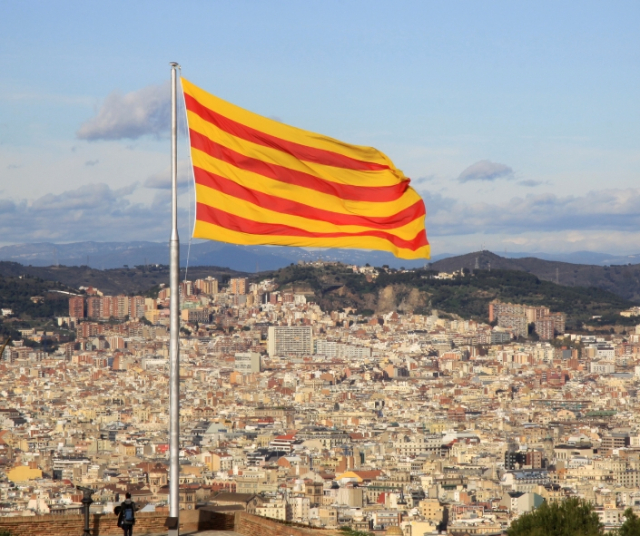Constitution Day of 1876 in Catalonia marks an important milestone in the history of this Spanish region, which has experienced a rich and complex political and cultural evolution over the years.
At the end of the 19th century, Spain was immersed in a time of momentous changes that would reconfigure its political and social landscape. The Revolution of 1868, also known as the September Revolution, marked the beginning of this period of transformation by overthrowing Queen Isabella II and ending the absolute monarchy. This revolt brought with it a desire to establish a more democratic and liberal government that reflected the ideals of the revolution.
The country, affected by economic and social crises, experienced a reformist fervor. In this context, the need arose to draft a new constitution that would lay the foundations for a more modern and progressive Spain. The task of shaping this new legal framework fell to the Constitution of 1876, which was promulgated during the reign of Alfonso XII.
The process of drafting this constitution was marked by political ambiguity and internal tensions. Spain was torn between republican ideals and monarchical currents, and the Constitution of 1876 attempted to reconcile these divergent forces. While he established a constitutional monarchy and limited the powers of the monarch, he also sought to balance regional autonomy with state unity.
In this context of political effervescence, the Constitution of 1876 emerged as a document that reflected the aspirations of a society in transition. Although it was not a panacea to resolve all tensions and contradictions, it laid the foundations for a political system that sought to address the challenges of a Spain that sought to define its identity in a time of significant change.
Content and Principles of the Constitution of 1876
The Constitution of 1876, promulgated in a crucial historical context for Spain, sought to establish the foundations of a constitutional monarchy that would respond to the demands of a society in transformation. This document, written during the reign of Alfonso XII, stood as an important milestone by introducing key principles that influenced the configuration of the Spanish political system at the end of the 19th century.
In its content, the Constitution of 1876 addressed various areas, one of the most notable being the limitation of monarchical powers. Seeking to avoid absolutism, the text established a constitutional monarchy that recognized fundamental rights and freedoms for citizens. This change represented a significant break with previous constitutions and reflected the desire to establish a more equitable and representative system.
One of the fundamental aspects of the Constitution was the protection of individual rights. In an effort to modernize the legal system, provisions were included that guaranteed civil and political liberties, marking an important step towards consolidating the rule of law. This focus on individual rights laid the foundations for future reforms and constitutions, influencing the shape of Spanish democracy. Furthermore, the Constitution of 1876 addressed the territorial issue, recognition and granting certain degrees of autonomy to different regions, including Catalonia. This territorial arrangement reflected the cultural and linguistic diversity of Spain, recognizing the particularities of each region. While the autonomy granted at the time did not reach current levels, it set an important precedent for future demands for self-government.
The Impact in Catalonia
The relationship between Catalonia and the central government in Madrid has historically been complex. The promulgation of the 1876 Constitution had a significant impact on the region, as it granted a degree of autonomy that allowed Catalonia to manage its internal affairs in areas such as education and culture.
However, tensions persisted due to cultural and economic differences, as well as the perception that the autonomy granted was not sufficient. Over the years, the question of Catalan self-government has been a recurring theme in Spanish politics, and Constitution Day of 1876 in Catalonia becomes a crucial moment to reflect on the relationship between the region and the central government. .
Challenges and Conflicts Over the Years
As the 20th century progressed, Catalonia experienced a series of political and social challenges. During the Second Spanish Republic (1931-1939), Catalonia was granted a greater degree of autonomy, but this period was also marked by political tensions that led to the Spanish Civil War.
The dictatorship of Francisco Franco (1939-1975) marked a setback in autonomist achievements, since the regime centralized power and repressed regional cultural identities. Constitution Day of 1876 took on symbolic meaning during these years, reminding many Catalans of the period when autonomy was most attainable.
The Resurgence of Self-Government
With the death of Franco and the transition to democracy in the 1970s, a new chapter opened in the history of Spain and Catalonia. The 1978 Constitution marked an important milestone by recognizing the cultural and regional diversity of the country, granting a high degree of autonomy to the autonomous communities.
Catalonia took advantage of this new era to strengthen its autonomous institutions and promote its language and culture. Constitution Day of 1876 became a reminder of the importance of autonomy and a catalyst for the resurgence of Catalan identity.
In the 21st century, Catalonia has faced new challenges in its quest for greater self-government. The referendums and independence movements have polarized Catalan society and have generated tensions with the central government. Constitution Day of 1876, although historically significant, also becomes a point of debate about the limits and nature of regional autonomy in contemporary Spain.
